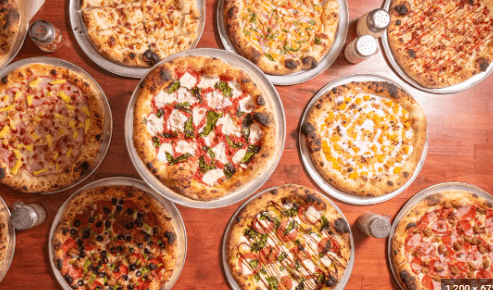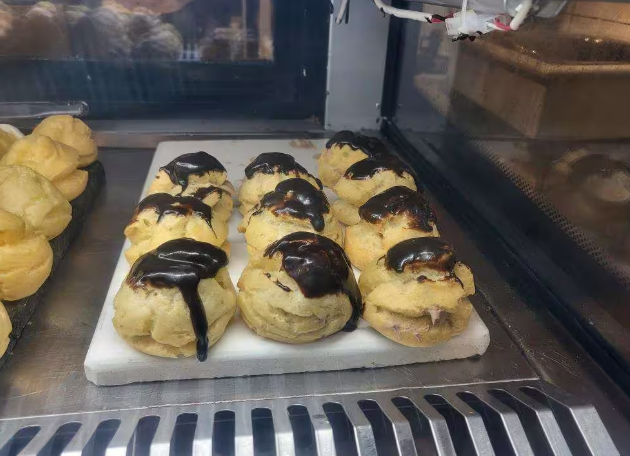The Quintessential Traditional Panettone Recipe: An Exquisite Italian Christmas Delight
Embark on a gastronomic journey with the festive traditional Italian Christmas bread, the Panettone. This culinary masterpiece is replete with candied fruits, assorted nuts, and an array of delightful ingredients designed to captivate your palate. In this post, we provide a comprehensive recipe and instructions on serving, storing, and deriving maximal enjoyment from this classic delicacy. Embark on a delightful culinary adventure as the traditional panettone recipe awaits!
Key Highlights
- Delve into the classic Italian Christmas treat with a detailed guide to making traditional Panettone.
- Unleash your creativity by adding a personal touch with unique variations like Orange Cranberry and Pistachio Almond.
- Put your leftover panettone to good use by transforming it into delightful dishes such as French Toast, Bread Pudding, and trifle—a sweet treat!
The Historical Context of Panettone
The delightful Italian Panettone boasts a rich history from the Renaissance era. Wheat was a scarce commodity during this time, typically reserved for Christmas festivities. The bread’s name is derived from “panetto,” signifying a small loaf, with an extra syllable added to denote a larger version. It differentiates itself from other sweetbreads due to its distinctive flavour profile, which includes a hint of sweetness contrasted by the tartness of candied orange peel.
A romantic legend associated with this classic cake tells the tale of a Milanese nobleman smitten with the daughter of a humble baker named Toni. To win over her family, he created an array of baked goods filled with luxurious fillings. These treats were fondly christened as ‘Pan de Toni’. Consequently, these treats have become a symbol of culinary delight and charming love stories!
Essential Ingredients for a Classic Panettone
The secret to a perfect Panettone lies in its core ingredients. A dough starter, or biga, imparts a distinctive flavour and texture. Candied citrus peels and raisins add sweetness, while butter and vanilla extract enhance the overall flavour, completing the traditional Panettone recipe.
The Dough Starter
The dough starter or biga is quintessential for making panettone. Comprising flour, water, and yeast it requires considerable patience, needing to rest for 8-12 hours in a warm spot before being incorporated into the mix. This pre-fermentation enhances the flavour and texture. For a twist, a sourdough starter can replace the regular dough starter, staying true to traditional panettone preparation techniques.
Preparing the Fruit Mixture
The fruit mixture is another crucial component of a panettone. A combination of quality butter and natural-tasting vanilla extract considerably boosts the complexity of the taste while maintaining a pleasant citrus aroma.
The Panettone Preparation Process
With the foundations laid out, it’s time to dive into the step-by-step process of making this delightful Italian bread. We’ll guide you through the intricacies of dough preparation, shaping, proofing, and baking your panettone to golden-brown perfection.
Mixing and Kneading the Dough
The perfect panettone dough is achieved by blending egg yolks, sugar, vanilla extract, and softened butter. An elastic consistency is achieved by kneading the dough on a low speed for about 5 minutes until it’s smooth and light. Place the mixture in a lightly greased bowl to preserve its attributes during the rising period.
Shaping and Proofing the Panettone
After the dough is mixed and kneaded, it’s time to shape and proof it using the Pirlatura method. This technique involves folding the dough thrice, resulting in the desired texture and shape. The dough takes about 1 hour to proof using this method.
Baking and Cooling the Panettone
Preheating the oven to 375°F marks the start of the baking process. Scoring the dough ensures a uniform rise during baking, which is carried out for 70-75 minutes. The cooling process then involves piercing the panettone and hanging it between two jars until it’s cooled.
Serving Your Panettone
Once your panettone is cooked and cooled, cut it into wedge-shaped slices and enjoy it either plain or with butter. For a more indulgent experience, transform your panettone into a delectable French Toast or Pudding.
Preserving Your Panettone
Wrap your panettone in clingfilm to ensure freshness and store it at room temperature. If you need to store it for extended periods, freezing each slice or the whole panettone is a viable option.
Reimagining the Traditional Recipe
If you wish to give the classic panettone recipe a unique spin, consider the Orange Cranberry Panettone or the Pistachio Almond Panettone. These creative variations are sure to be a hit at any festive gathering!
Navigating Through Common Panettone Challenges
Creating a panettone is no cakewalk, with potential challenges like a slow-rising dough or a collapse during cooling. However, with our helpful tips, you can overcome these obstacles.
Utilizing Leftover Panettone
Turn your leftover panettone into exciting dishes like French Toast or Bread Pudding. You could even try a Panettone trifle – its layers of custard cream, fruit, and crème fraîche create a memorable dessert.
In Conclusion
With this comprehensive guide to baking a traditional panettone at home, you can create delectable loaves that will make any festive occasion special! If you’re pressed for time or wish to relish the best Panettone, consider trying out Brunetti’s traditional Italian cakes & Christmas treats.
Frequently Asked Questions
How to eat panettone?
Slice your panettone with a serrated knife and enjoy it with a hot beverage.
What’s special about panettone?
The acidic dough, long curing process, and delicate balance between light texture and rich flavour from butter and eggs make Panettone special.
Why is panettone expensive?
The detailed baking process justifies the premium cost of panettone. Cheaper variants often compromise on flavour and quality.
Is panettone soaked in alcohol?
No, panettone is not soaked in alcohol. However, pairing it with sweet wine enhances the overall dining experience.
Can I use a sourdough starter instead of a dough starter for panettone?
Yes, a sourdough starter can substitute the typical dough starter for a unique sour-tangy twang to your panettone.






